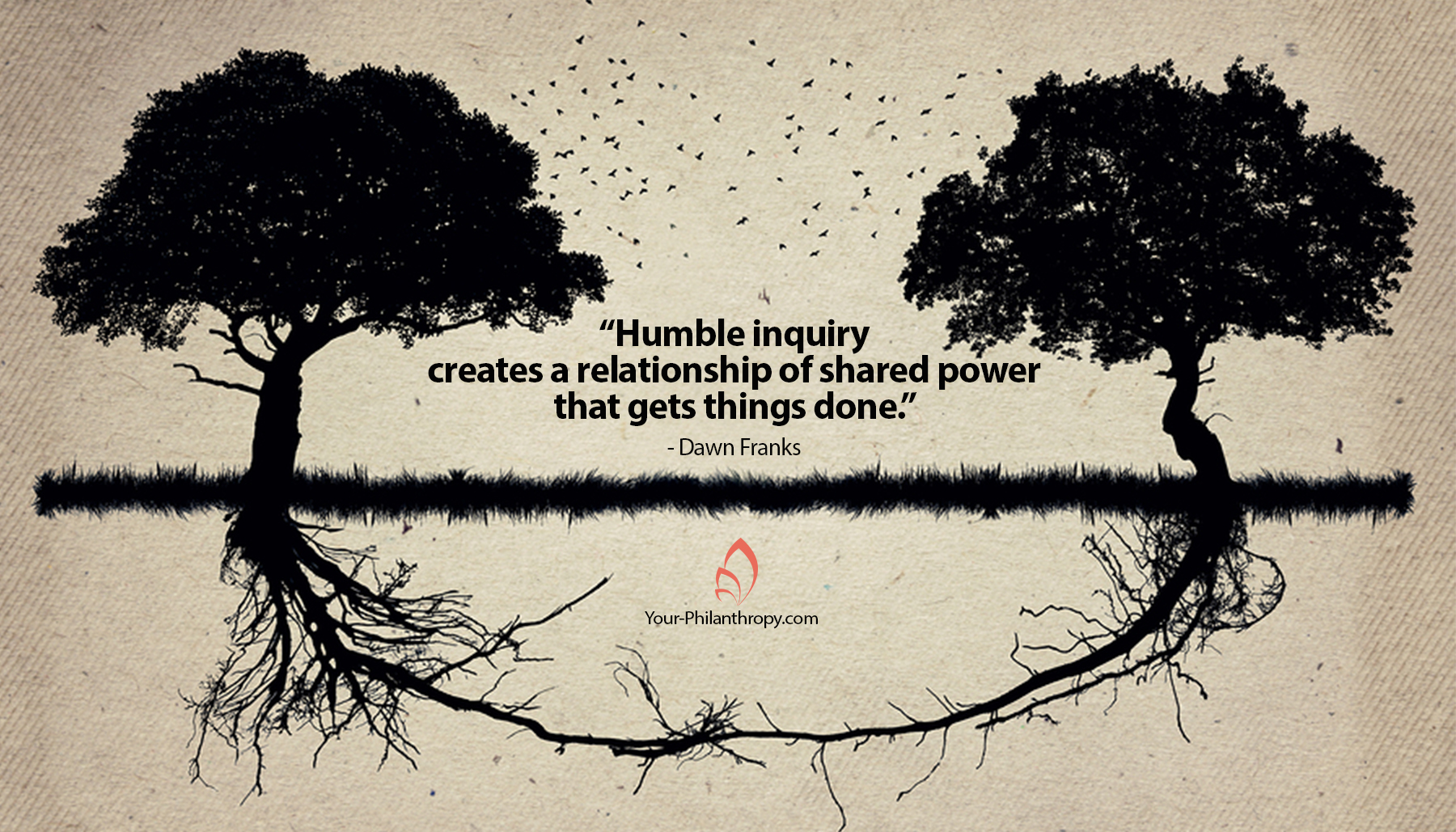Are we speaking the same language? Seriously, when a nonprofit says here’s a list of items our organization most needs are you moved to make a phone call and take something off the list? When a donor says “I’m excited about what you do and would like to learn more,” do you know what to say next?
Donors and nonprofit organizations frequently travel the littered road of unfinished projects, unfunded ideas, and disappointments.
Two words can change it all. Humble Inquiry.
Several years ago I witnessed the power of humble inquiry when a broken-hearted parent sat in our office and struggled to explain his vision of “better” that would keep other parents from experiencing his pain. He had the capacity to be a donor and to influence other donors. Spending time asking probing, open-ended questions helped him find a clear direction and strategies for inviting others to join in the work.
In a different conversation, a nonprofit executive director struggled to understand why donors were not immediately drawn to the work. Worn out from always describing what they did without stopping to learn what might be of interest to the donor was quickly leading to burn-out for this highly committed individual. Learning to use humble inquiry changed the conversations and resulted in interested donors.
According to Edgar H. Schein, author of the book “Humble Inquiry,” there are four types of inquiry. Most of us spend our time in three: diagnostic, confrontational and process-oriented inquiry.
Here’s a quick tutorial:
- Diagnostic Inquiry – I get curious and steer my questions in one direction. I focus the conversation on the one thing I’m interested in knowing or hearing about.
- Confrontational Inquiry – I load my ideas into my question. In essence, I’m focused on what I’m thinking about rather than approaching the subject with an open mind gathering information and learning.
- Process-oriented Inquiry – My questions focus on the conversation to gauge or process what is happening right now. I want to know if my immediate goals for the conversation are met. Basically, I take a read on the relationship I am in with the person I’m conversing with right now.
Each has a place in the important work of learning, processing, and decision-making. But alone they will not help donors and nonprofit organizations clean up the littered road.
Humble inquiry is the pointed stick we need to clean it up. Here-and-now humility is the key. I clearly depend on you to help me reach my goal, my dream, and my vision of what can be. The interdependence of donor and nonprofit organization make success possible.
Goals, dreams, vision – all are equally and strongly felt by donors and nonprofit organizations. How do we get on the same page and share them toward a better outcome?
Humble humility practiced in the here-and-now suggests that I allow myself to be subordinate to you to learn from you, to process with you, ultimately to plan with you.
The only way to speak the same language is to take time for humble inquiry. Asking temporarily empowers the other person in the conversation and makes me temporarily vulnerable.
That means donor and nonprofit organizations must spend time together, learn together, think together and ultimately make plans for reaching a shared vision.
You have the power to help nonprofit organizations achieve their goals or the power to stop them in their tracks. They have the power to help you achieve your goals. Humble inquiry creates a relationship of shared power that gets things done.
Would you like to learn more about powerful conversations that can change the world? Let’s talk about it.


0 Comments